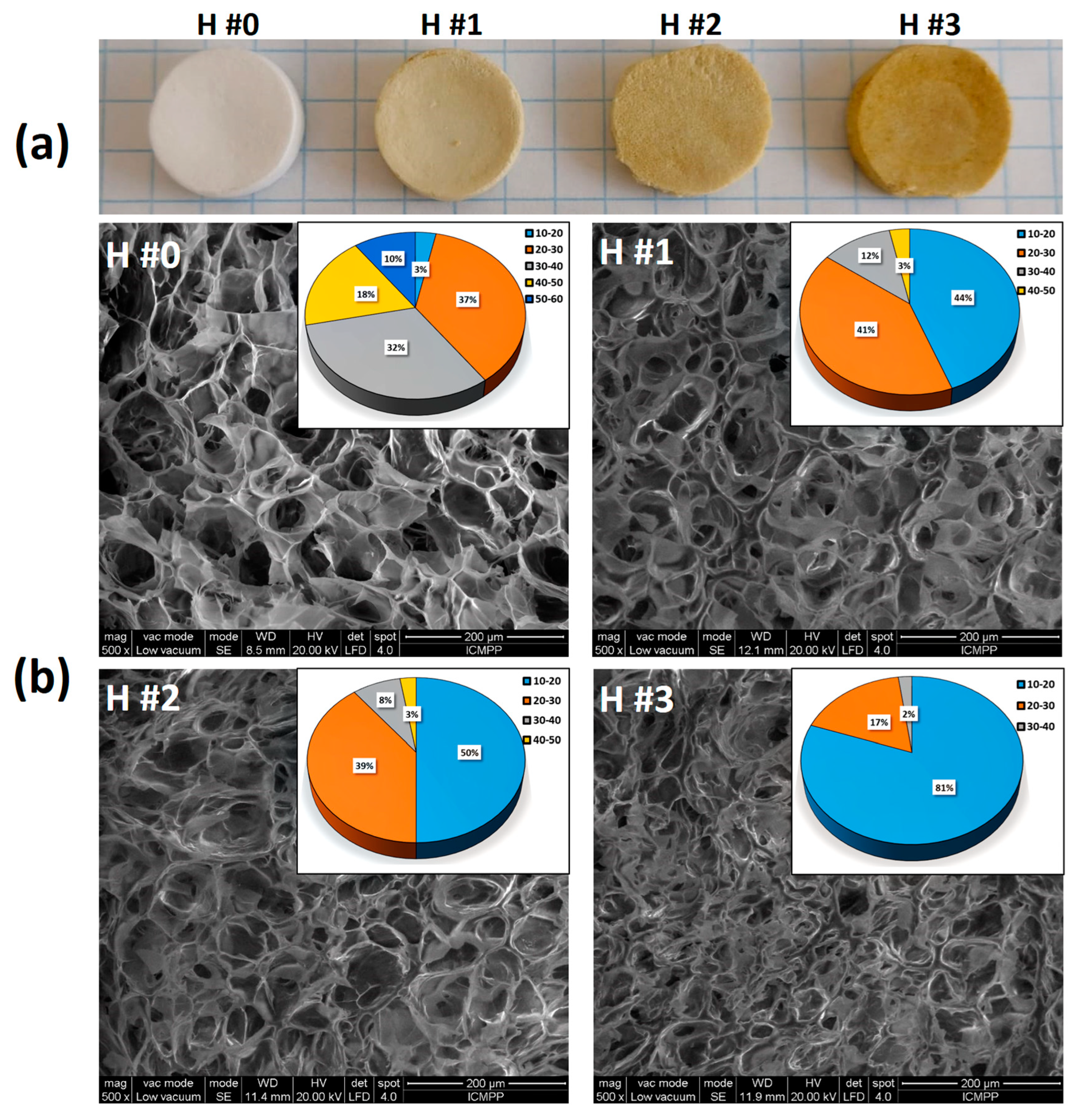Pullulan/Poly(vinyl alcohol) Hydrogels Loaded with Calendula officinalis Extract: Design and In Vitro Evaluation for Wound Healing Applications

The therapeutic efficiency of plant extracts has been limited by their poor pharmaceutical availability. Hydrogels have promising potential to be applied as wound dressings due to their high capacity to absorb exudates and their enhanced performance in loading and releasing plant extracts. In this work, pullulan/poly (vinyl alcohol) (P/PVA) hydrogels were first prepared using an eco-friendly method based on both a covalent and physical cross-linking approach. Then, the hydrogels were loaded with the hydroalcoholic extract of Calendula officinalis by a simple post-loading immersion method. Different loading capacities were investigated in terms of the physico-chemical properties, chemical composition, mechanical properties, and water absorption.
The hydrogels exhibited high loading efficiency due to the hydrogen bonding interactions between polymer and extract. The water retention capacity as well as the mechanical properties decreased with the increase in the extract amount in hydrogel. However, higher amounts of extract in the hydrogel improved the bioadhesiveness. The release of extract from hydrogels was controlled by the Fickian diffusion mechanism. Extract-loaded hydrogels expressed high antioxidant activity, reaching 70% DPPH radical scavenging after 15 min immersion in buffer solution at pH 5.5. Additionally, loaded hydrogels showed a high antibacterial activity against Gram-positive and Gram-negative bacteria and were non-cytotoxic against HDFa cells.
Download the full article as PDF here Pullulan/Poly(vinyl alcohol) Hydrogels Loaded with Calendula officinalis Extract: Design and In Vitro Evaluation for Wound Healing Applications
or read it here
Materials
The pharmaceutical Calendula officinalis L. (Asteraceae) flower extract (C. officinalis) (1:5 hydroalcoholic extract, ethanol:water = 52/48, w/w) was supplied by Dacia Plant S.R.L (Brasov, Romania). Pullulan (P) with Mw = 200,000 g/mol was purchased from Hayashibara Lab. Ltd. (Okoyama, Japan). Poly(vinyl alcohol) (PVA) with Mw = 47,000 g/mol and degree of hydrolysis 98.0–98.8 mol%, trisodium trimethaphosphate (STMP), and sodium hydroxide were purchased from Sigma–Aldrich Chemie GmbH, Steinheim, Germany. Folin–Ciocalteu’s phenol reagent (2N), 2,2-diphenyl-1-picrylhydrazyl (DPPH), gallic acid (GA), quercetin (Q), and oleanolic acid (OA) were obtained from Sigma Aldrich Co. (St. Louis, MO, USA), ascorbic acid was from Soharlau chemie (Barcelona, Spain). All chemicals were used as received without any further purification.
Pelin, I.M.; Silion, M.; Popescu, I.; Rîmbu, C.M.; Fundueanu, G.; Constantin, M. Pullulan/Poly(vinyl alcohol) Hydrogels Loaded with Calendula officinalis Extract: Design and In Vitro Evaluation for Wound Healing Applications. Pharmaceutics 2023, 15, 1674. https://doi.org/10.3390/pharmaceutics15061674
Visit our new Webinar:
Solving capping challenges using mannitol as an excipient model
Get more information & register here:


